My definition of “Interaction”
After reading the required readings especially The Art of Interactive Design, Crawford, I get a better understanding of Interaction. Like a conversation, “each participant in turn listens, thinks, and speaks.” From my perspective, the hardcore of the process is “thinking” although it’s invisible. It helps make sure that what one “speaks” is in response to what he “listens”. Namely, participants of interaction should be interdependent on each other. However, this part is often ignored or paid little attention to by many creators. Thus, there are still many interaction projects like “the fridge”.Another important point is the engagement of people because the projects are created to satisfy people’s need and entertainment. Interaction is not a single choice but a subjective question. People’s diversity should be considered and respected in the process.
Project that aligns with my definition:Tactum: A Skin-Centric Approach to Digital Design and Fabrication
This project uses skin as an interactive input surface for gestural 3D modeling-to-fabrication systems. Sensors sense the skin touch of user, then show them on the computer screen. And user makes another touch according to what he or she sees on the screen, then the loop starts again. It enables non-expert people to create 3D printing drawing on their bodies instead of on complex softwares.
Project that doesn’t align with my definition:EM Table
This project is said to be “an experimental object” and “aiming at exploring less known aspect of energies, electromagnetic possibilities and possible new interactions.” Indeed, it’s of high technology. However, as to interaction, I think its level is low. Despite those electromagnetic components, its essence is a just a distance sensor.
Group Project
The idea of ClosetPod came from Jennifer of adaptive clothing after other two proposals of lost sticker and jello shot of oxygen. I advocated the third one because I think although the first two are high-tech and serve people well, but they’re not interactive. By which I mean they only respond to people in a fixed way and not proced back and forth. But the idea of adaptive clothing aligns with my definition because it can detect the change of weather and the temperature of human body and correspond to it by changing clothes’ form and material quality. After deciding the general idea, we also did a lot of amendments on details. For example, we added a screen to show different styles of clothes user can choose from. We also gather together many times for the drawing and rehearsals of conversations in the performance. Below are some pictures I took during our meetings.

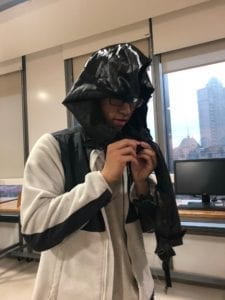
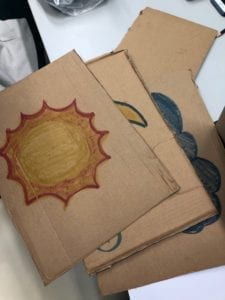
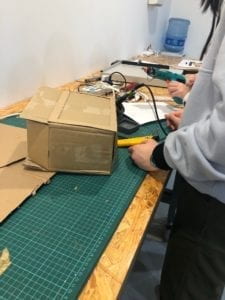
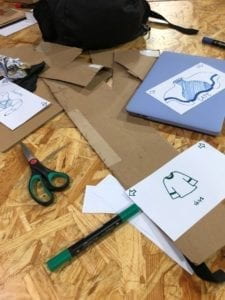
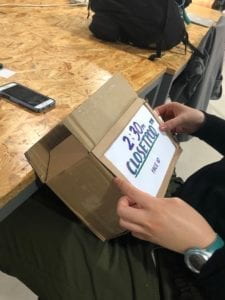
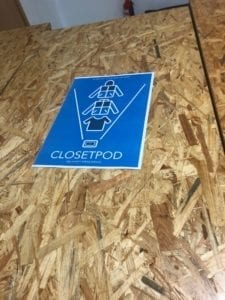
Reference List
The Art of Interactive Design, Crawford
Tactum: A Skin-Centric Approach to Digital Design and Fabrication